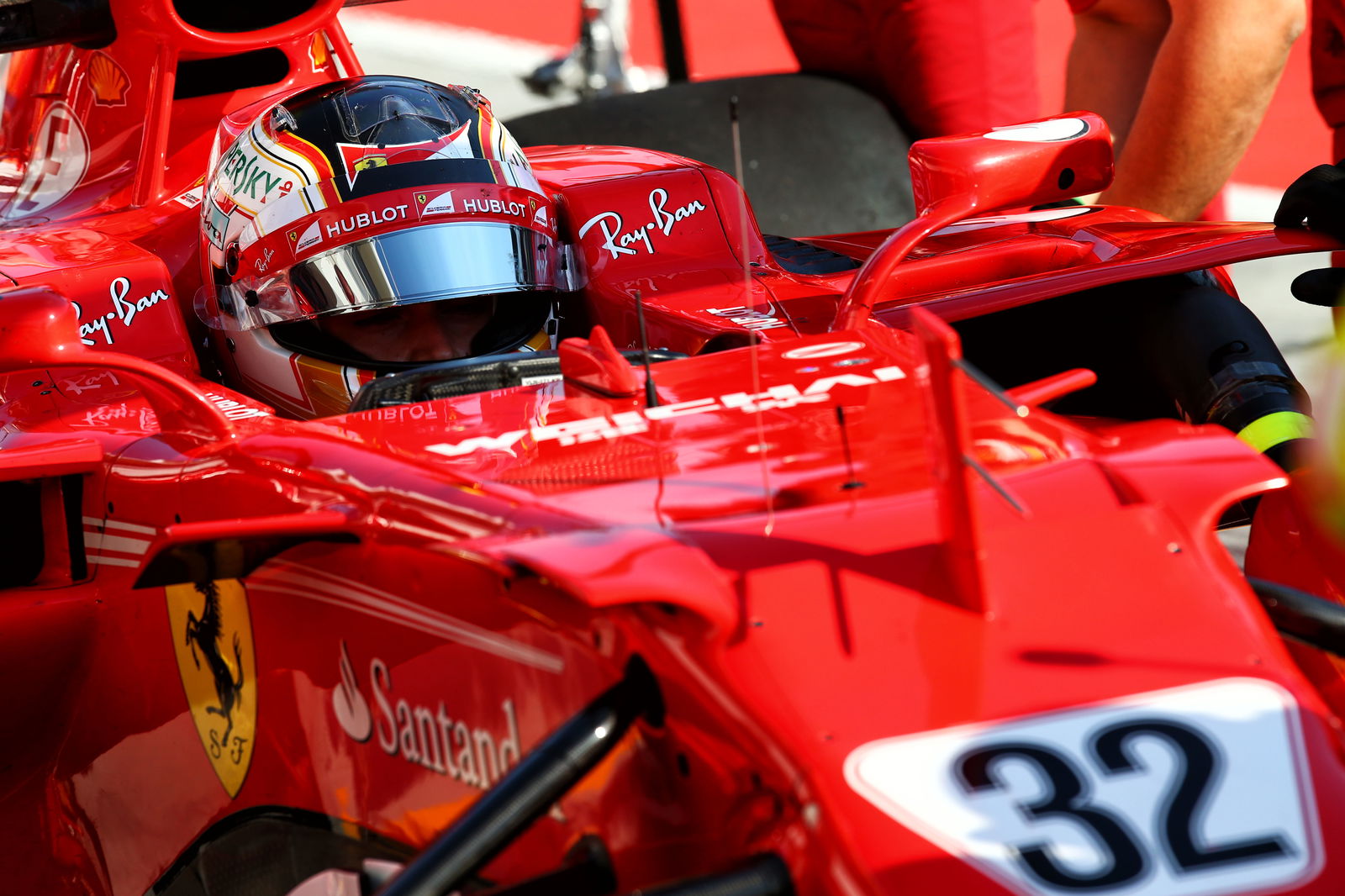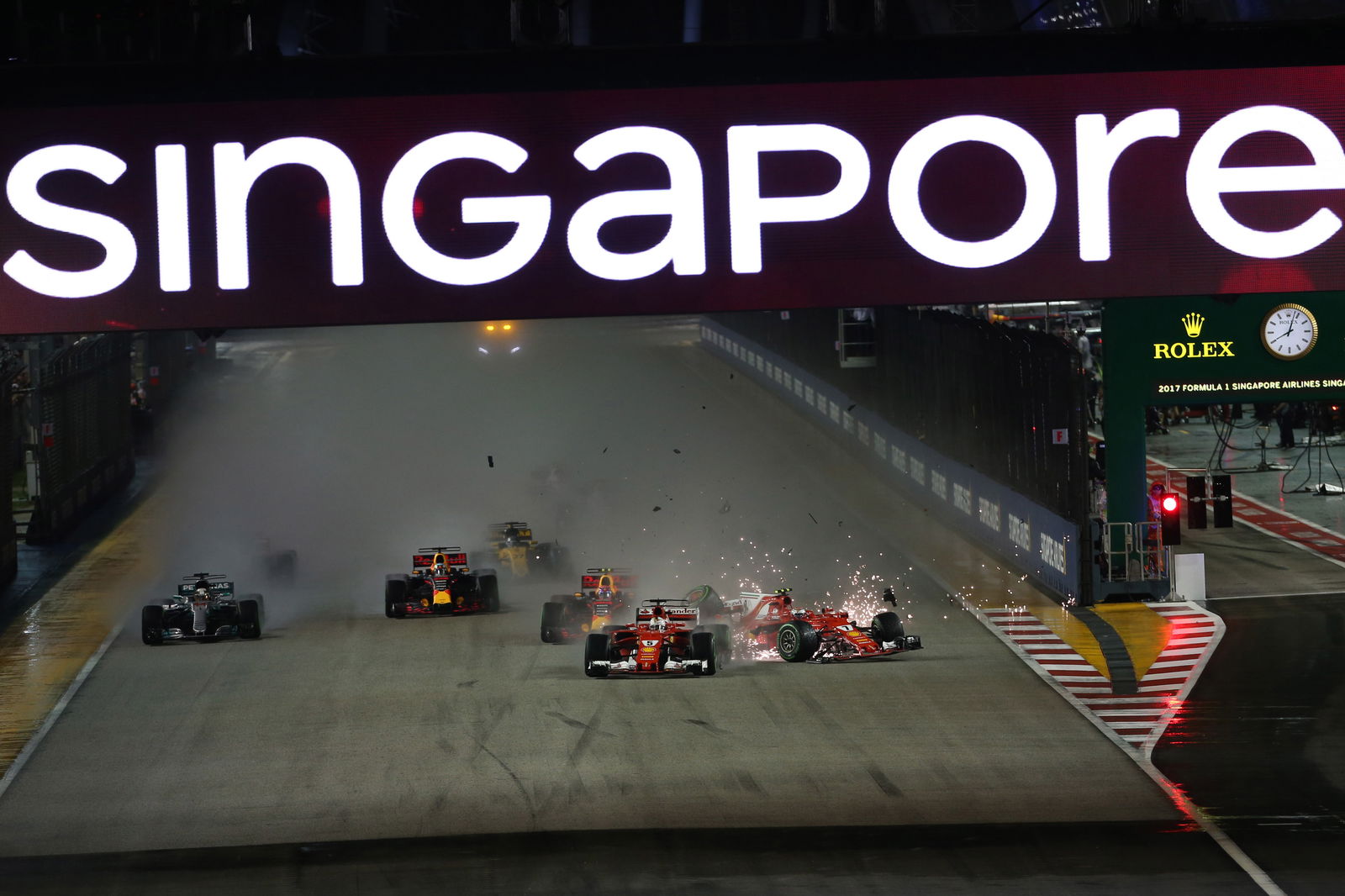Why Leclerc and Raikkonen are both winners in 2019 F1 driver swap
Just when all seemed to be quietening down in the driver market following a number of surprising switches and bombshell announcements, the latest piece in the unpredictable Formula 1 2019 puzzle fell into place in the build-up to the Singapore Grand Prix.

Just when all seemed to be quietening down in the driver market following a number of surprising switches and bombshell announcements, the latest piece in the unpredictable Formula 1 2019 puzzle fell into place in the build-up to the Singapore Grand Prix.
Tuesday’s news of Charles Leclerc’s promotion to Ferrari as Kimi Raikkonen's replacement next season was perhaps not hugely surprising in many ways – and certainly not as shocking as Daniel Ricciardo’s gamble to leave Red Bull for Renault – but it does signal a major change of philosophy from the Scuderia with regards to its driver line-up.
Ferrari’s bold decision to promote its highly-rated protégé after just one season goes against its former conservative approach of fielding largely experienced driver pairings. It also points towards the superb job Leclerc, just 20 years old, has done in his opening 14 grands prix. His performances have persuaded Ferrari to make him its youngest driver since Ricardo Rodriguez in 1961, and the least experienced driver in its line-up since Stefan Johanssen joined in 1985.
Following a tough start in the first three races of 2018, Leclerc has demonstrated the kind of excellent race craft (with five points finishes to his name) and raw speed - reflected in a series of brilliant qualifying performances to reach Q3 on three occasions - that originally had the paddock salivating at the prospect of seeing the Monegasque on the F1 grid after he blew away his opposition in convincing style in back-to-back title-winning campaigns in GP3 and Formula 2.
His transition through the junior ranks to Maranello has been as remarkable as it has refreshing. Just over three years will separate Leclerc from being announced as a Ferrari Driver Academy member to the moment he will be stepping into the seat of the famous scarlet red Prancing Horse ahead of his race debut with the team at the curtain-raiser in Melbourne next March.
Leclerc was always destined for Ferrari, but his graduation has been accelerated by his ability to make the most of Sauber’s revitalised 2018 challenger and comprehensively out-perform experienced teammate Marcus Ericsson on his way to making a stunning start to life in F1. In 2019, we will get to see what he is really capable of in a car that should be in a position to fight for race wins and world championships, if this season is anything to go by.
Replacing Raikkonen will be no easy feat. This is by far the biggest leap Leclerc has made in his career to date and fighting for victories brings the added caveat of facing greater scrutiny than battling for lower reaches of the top 10, not to mention the pressure and level of expectation that naturally comes with racing for Ferrari.
Perhaps the bigger surprise to come out of the announcement was Raikkonen’s somewhat poetic move to bookend his career by re-joining the Sauber team that launched his successful tenure in the sport back in 2001.
Raikkonen remains one of the most popular and highly-regarded drivers in F1, having recorded 20 grand prix wins and 100 podiums to date, but his failure to score a single win in a difficult transition to the V6 hybrid era and match the levels of Sebastian Vettel in an ever-improving Ferrari, coupled with Leclerc’s continued rise, ultimately laid the foundations for his departure, despite some improved performances this season.
You would have been forgiven for thinking Raikkonen’s future in the sport was looking increasingly bleak with renewed speculation over the Italian Grand Prix weekend linking Leclerc with his seat, particularly given the lack of competitive options remaining on the grid for next year.

But Sauber has handed the Finn with an unexpected chance to carry on racing in F1. For Raikkonen - who turns 39 next month - to agree to a two-year deal with the Swiss outfit backs his recent claims he had no doubts about wanting to extend his spell in the sport into a 17th campaign. Although he often seems disinterested with many aspects of F1, including media duties, Raikkonen insisted he would not stay if he no longer enjoyed it, nor if he felt his overall performance and abilities were diminishing.
Instead, Raikkonen will be presented with a chance to help continue the next phase of the rebuilding project at Sauber. Much-needed backing from Alfa Romeo, as well as a renewed collaboration with Ferrari to take on current-spec power units has paid off handsomely for the team this year and all the signs point towards further development and improvements heading into 2019.
Raikkonen’s experience and strength at helping to push technical developments over the course of a season will prove vital for Sauber’s hopes of continuing its positive trend of competitiveness, while he has the chance to flourish in a less demanding atmosphere and can avoid the yearly frustration of facing questions over his future that became a feature of his past few years due to the short-term contracts dished out to him by Ferrari.
“Signing Kimi as our driver represents an important pillar of our project, and brings us closer to our target of making significant progress as a team in the near future,” Sauber team principal Frederic Vasseur said.
“Kimi’s undoubted talent and immense experience in Formula 1 will not only contribute to the development of our car, but will also accelerate the growth and development of our team as a whole. Together, we will start the 2019 season with a strong foundation, driven by the determination to fight for results that count.”
One negative of the move for Ferrari could be the apparent self-inflicted roadblock Raikkonen has created for its other junior driver, Antonio Giovinazzi. The Italian driver has conducted extensive simulator work for Ferrari alongside his role as Sauber’s reserve driver and seemed the obvious choice to fill any seat vacated by Leclerc at a team he knows well from his fleeting spell as stand-in for the injured Pascal Wehrlein during the early rounds of 2017.
Giovinazzi may avoid another season on the sidelines of F1 with Ericsson’s future beyond the current campaign not as clear-cut as it might seem, while an opening could crop up at Ferrari-powered Haas - though a recent turnaround in performances has boosted Romain Grosjean’s chances of retaining his seat with the US team.
Ferrari’s gamble to bring through its next generation of talent reflects its desire to solidify its future and counteract similar recent moves made by Red Bull and McLaren in promoting their own starlets in Max Verstappen, Pierre Gasly and Lando Norris respectively. It also serves up the thrilling prospect of witnessing how Leclerc will fare against four-time world champion Sebastian Vettel as youth looks set to come to the forefront in 2019.
Time will truly tell if Ferrari has made the right the right call, but beyond Raikkonen’s initial disappointment of losing his Ferrari seat, the swap with Leclerc appears to have benefits for all parties involved.



